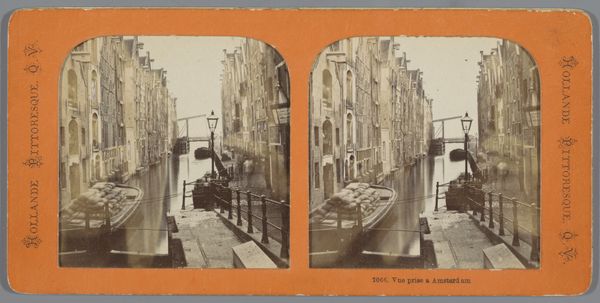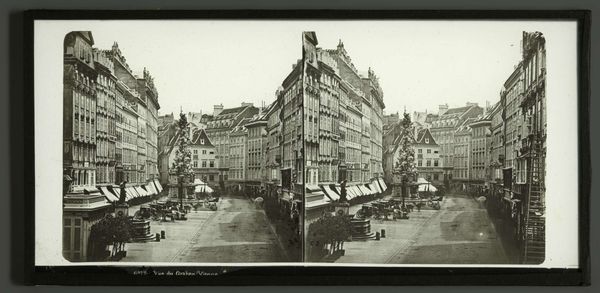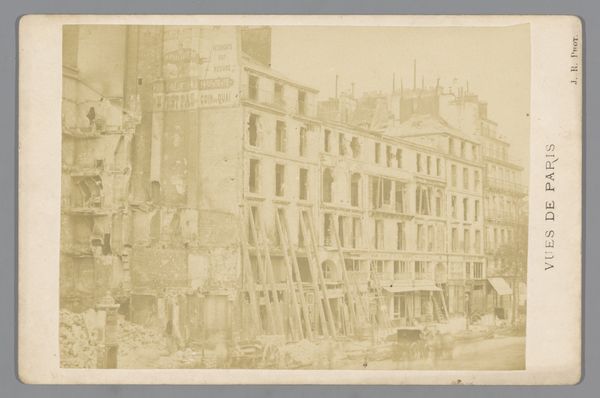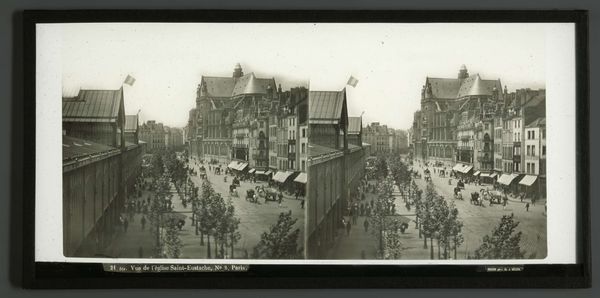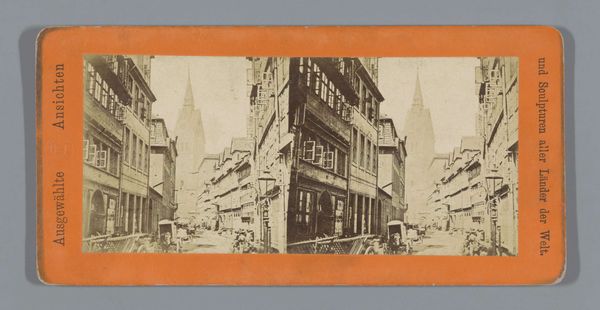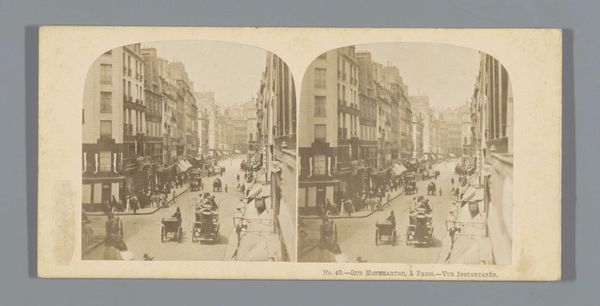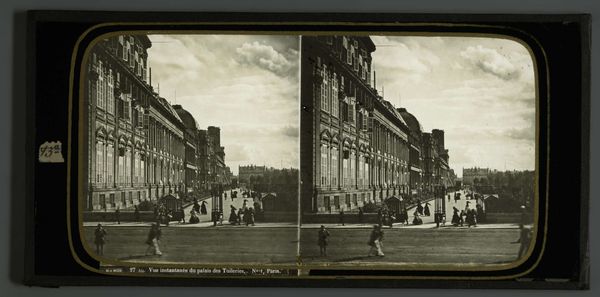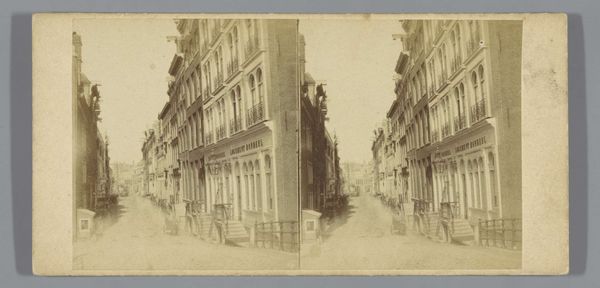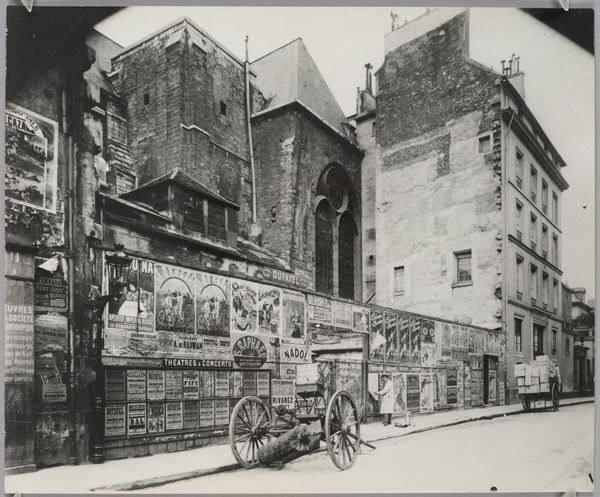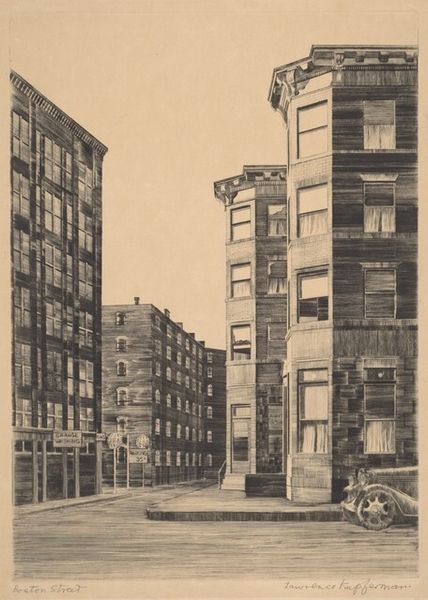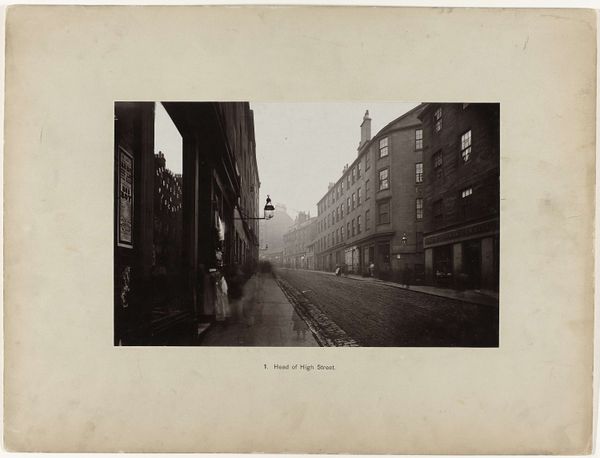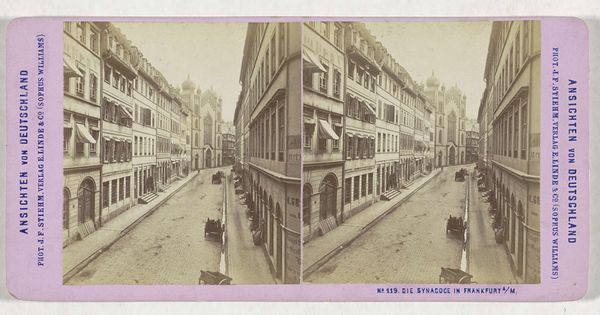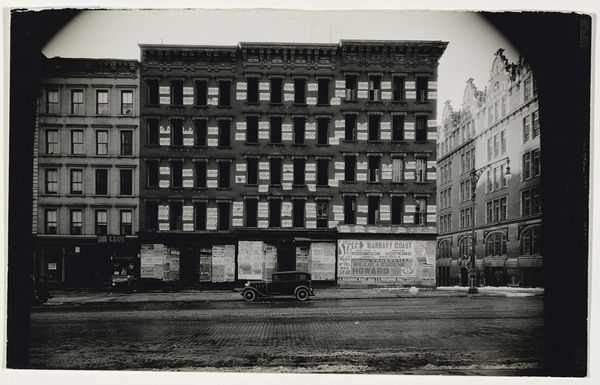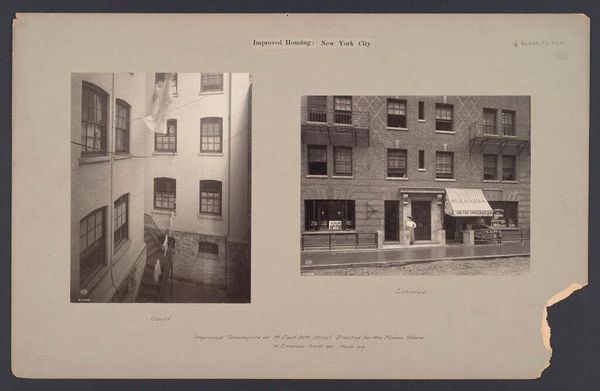
photography, albumen-print
#
photography
#
cityscape
#
street
#
albumen-print
#
realism
Dimensions: height 84 mm, width 171 mm
Copyright: Rijks Museum: Open Domain
Curator: Let's discuss this striking albumen print entitled "Judengasse in Frankfurt am Main," a photographic work produced between 1860 and 1870 by the studio of Ferrier Père-Fils et Soulier. What is your immediate impression? Editor: Well, immediately, there's this profound sense of stillness. It's almost eerie, like time itself is holding its breath in this narrow street. The tall buildings feel oppressive, casting long shadows and creating a really intense atmosphere. Curator: That feeling aligns with the history of the Judengasse, which translates to "Jew's Alley". These tightly packed streets weren't just an accident of urban planning; they reflected deliberate policies of segregation and control inflicted upon Frankfurt's Jewish population for centuries. Editor: Knowing that adds such a layer of depth, doesn’t it? Suddenly, the architecture isn’t just visually interesting— it's a cage, or a fortress. Are we seeing reality or a curated version for outsiders? It feels very "us and them." Curator: Precisely. And consider the photographic technique. The albumen print, a process involving egg whites, creates this incredibly sharp, almost hyper-real image. Yet, it’s devoid of people, heightening that feeling of emptiness you picked up on. Editor: The contrast between the clarity of the architecture and the blur where the street fades to infinity… it makes me wonder who gets to see what and who gets to disappear? And the photographer capturing all this— I wonder about their position. Curator: The photographer’s perspective is critical, placing this document within the power structures of the era. The image presents a view for the non-Jewish gaze, and how might that reinforce existing stereotypes or misconceptions about Jewish life and identity in this district? Editor: Right. Art isn't neutral, is it? I find my emotions tugged every which way in response to the print. History has such a shadow, doesn't it? It makes me appreciate what is not revealed almost as much as what is captured here. Curator: Indeed, it encourages critical reflection, reminding us that artworks such as these must be interpreted within the broader context of historical injustices and societal inequalities. Editor: Definitely. I can only look, wonder, reflect. So many hidden layers here, ready to provoke conversation and reflection, if you take the time to really "see."
Comments
No comments
Be the first to comment and join the conversation on the ultimate creative platform.
